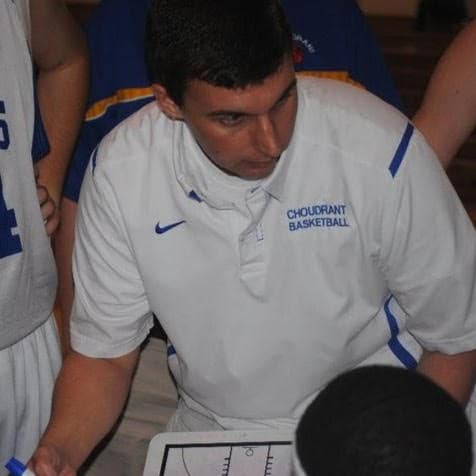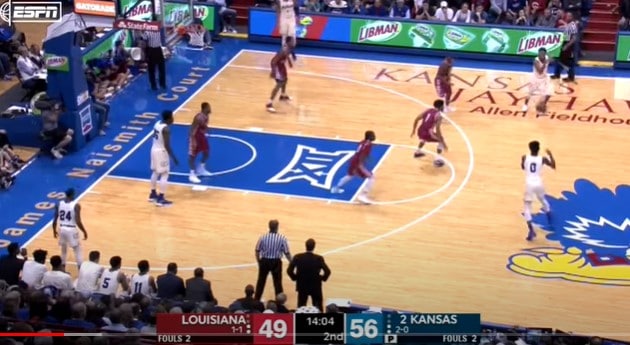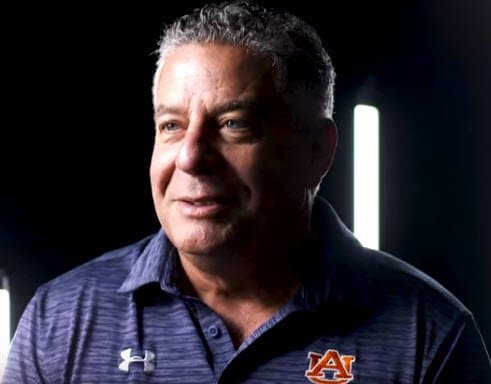Rhythm Offense and Dribble Drive Motion
By: Ryan Smith
Introduction to Rhythm Offense
This article is going to take you through applying the Rhythm Offense concepts into the Dribble Drive Motion system.
Before Installing Dribble Drive Motion as your “offense”
The time table of introducing the DDM offense to your team is something that is very important to think about. Coaches need to sit down and look over how much practice time they have before their first game. Coaches need to create a preseason plan that allows plenty of time to teach players how to “play” without the players worrying about specific “system” actions. Players need to know how to make decisions for themselves within the structure of spacing, basic actions, and the “Count Method”. I would start the first practice or team meeting explaining the “Why” of the “Count Method”. This will give coaches the opportunity to show the benefits of playing within the “Count Method” on “Count Situation” catches. As a varsity or higher level head coach, I would take the time to meet with each player to discuss the “Number System” with them. Since winning is a big part of higher levels, players need to know their role and how they best fit within the overall team dynamic. It’s important at this time to talk honestly with players and encourage them their role can change throughout the preseason and season based on their improvement level. Players also need to have a general idea about what type of shots the coach expects them to take, tempo to play at, which players should take a majority of the shots, etc. I would take the time to have these team and individual meetings regardless of the system I was installing on offense.

Before putting in the “system” actions, I would want my players to be able to “play” in these areas:
- Transition
- Closeouts – Shot/Drive reads
- Shot/Pass reads for ball handler when they penetrate
- Penetration reactions by off ball players
- Getting open
- Backdoors
- Dribble At reads
- Passing & Catching
- Scoring/Finishing
I would use different 1v1, 2v2, and 3v3 drills (SSGs) to emphasize the actions presented in the list. During this time the coach can teach their fundamental beliefs for each point and can continue to evaluate the skill level of each player.
General Information
The basic idea of the DDM is to really space the floor, create gaps, and attack the defense with dribble penetration. The offense focuses on getting to the rim, getting to the foul line, and using the dribble penetration to create open three point attempts.
Pros for Rhythm Offense
- Mentality it creates – Aggressive, Confidence, Competitiveness
- Spacing – Creating Gaps
- Simple Teaching Points
- Allows Players To Play
- Easy to use ideas in pick up games
- Pick up fouls on opponents – Play against bench
- Inside position can be occupied by unskilled post player
- Flows easily from a transition break into the half court offense
Cons for Rhythm Offense
- Highly personal driven – shooters and attackers
- Must have elite playmakers that can create with dribble
- Lack of movement – Can cause stagnation with over dribbling
- Can cause players to rush – happy feet on catches
- Lack of other actions – Ex: screens
The “con” list is a general list of what you will hear many coaches say about the DDM offense.
Offensive Guidelines
- Attack the rim with goal of getting to rack zone
- Create double and triple gaps to create easier driving opportunities
- Post player relocates from block to block under the rim opening up ball side driving lanes
- Once a perimeter player passes the ball their job is to sprint outside the 3pt line
- Look to put together multiple drives during each possession
- Stop in drop zone if you don’t feel you’re going to beat your man to the rack zone
Diagrams
“Basic Half Court Set Up” diagrams start a new possession and set of actions.
Adding Rhythm Offense
In a lot of systems players need the “Rhythm Offense” to show them when to look for their offense, but I don’t think this is the case with the DDM. In this system players need the “Rhythm Offense” to show them when their scoring opportunity is over and when it is time to look for a teammate.
Benefits of Rhythm Offense
- Ease of Assigning Defined Game Roles or Actions (Varsity Level Only)
- Coaches can communicate with each player when and where they can look for their own “One Count” and “Two Count” actions
- “Count Method” works in conjunction with the main reads in the offense
- Removes stagnation by holding every player accountable to the “Three Count”
Strategies for Rhythm Offense
General Strategies for Rhythm Offense
- Determine if each drill or each time you work on DDM is “game” or “practice”
- Game – Players play within their designated game label/number. Can look to add discipline/punishment for actions – Winning only goal
- Practice – Time for players to step outside their label and try new “game” actions. No punishment/discipline for actions/decisions – Development is only goal
- Use “Count Method” until players can go through the progression reads in their sleep
- Find a “One Count” action for every player
- Give “Complete” players freedom throughout “Count Method”
- Specialists
- “Ones”
- Stay loaded and look for “One Count” actions
- Nothing on the “One Count” – Sell a “Two Count” action
- “Ones”
- The selling of a “Two Count” action should start the “Three Count” action
- “Twos”
- Stay loaded and sell a “One Count” action
- Read defense for “Two Count” action
- If nothing then start “Three Count”
- “Threes”
- If capable, sell “One Count” and “Two Count” actions before “Three Count”
- If not then encourage “Threes” to use advance “Count Method” reads to keep the ball moving
- Allow players to look for “Advance Count Method” reads
- Add Dribble Ats for Dribble Handoffs or Shallow/Back Cuts as a “Three Count” option
- Have a general “2” call for the possession
- Have a general “3” call for the possession
- If using the combination of RO & DDM with youth teams, allow the players to play through “Count Situation” catches without attaching a “Number System” label. Focus on teaching what is a good decision and what is not a good decision during each progression read. Mostly allow players the freedom to work through the progressions themselves and see what they decide on their own. Many times you will see players making “Advance Count” reads.
Count Method DDM Diagrams
The following diagrams contain ways I would incorporate the “Count Method” into a Dribble Drive Motion today.
Things to know before you open them:
- We want to move from a “Noncount Situation” to a “Count Situation” as quickly and safely as we can.
- “Count Situation” catches should lead to another “Count Situation” catch and not back to “Noncount Situation” catches.
- Players are to go through the “Count Method” progression of reads on every “Count Situation” catch. There are many benefits for doing this.
“Basic Half Court Set Up” diagram starts a new possession and set of actions.
-
Dribble At Basics
-
Dribble At – DDM
-
Passing – DDM
-
Combined “Three Count” Actions
-
Dribble Drive Transition
Specific strategies based on “Number System” labels
This is this just as important, if not more important, as using the “Count Method”. Spend time learning how to best approach your team with these numbers and labels to help them buy into the ideas. Buying in can help players make the most out of their playing time. Stress to them these numbers and labels are not permanent and use the ideas as motivation for your players. (6th Man)
Couple more things to consider before we get started with the list of player labels:
- I feel that every player can be taught how to read a closeout – drive/shot read on closeouts.
- After deciding to drive a closeout, I also feel that every player can be taught how to “play behind the defense” – shot/pass read on drive.
Numbers and Labels
CS = Count Situation
NCS = Noncount Situation
CM = Count Method
In the following list, the other players not listed as “Complete” and/or “Specialist” will be “Role Players”
- Team with one “Complete” perimeter player.
- Place at 4 spot
- Have a rule that this player has to make at least one “CS” catch per possession before a shot is taken. I feel placing the player in this spot will allow their teammates multiple ways to get them the ball.
- Team with two “Complete” perimeter players.
- Place at 2 & 4 spots
- Outlet to 1 and let them try and throw ahead to 2 – 2 can try and score from a “NCS”or create a “CS” catch for a teammate that allows for an easier “CM” read; More Space
- Player in 4 spot will always be just 1 or 2 passes away from the most likely next action by 1 or 2
- Team with three “Complete” perimeter players.
- Same as #2 – Place third “Complete” player in the 2 spot
- This position placement puts the three players in the spots that receive the ball the most.
- Team with a “Complete” post player in the 5 spot
- Same as #2 – Place third “Complete” player in the 2 spot
- Place at 2 & 4 spots
- Place at 4 spot
- Specialists
- Team with one “Two”
- 4 spot
- Create action before getting them the ball.
- Team with two “Twos”
- 2 & 4 spots
- Team with three “Twos”
- 1, 2, & 4 spots
- Team with one “One”
- I would consider putting them at the 1 spot if they had the ability to catch an outlet and throw it ahead to 2 (Diagrams) but most likely would place this player in the 3 spot
- When looking to get this player the ball for a “CS” catch, I would stress driving the ball from the right side of the floor to the middle.
- Team with two “Ones”
- 1 & 3 spots
- Team with three “Ones”
- 1, 2, & 3 spots
- Combinations of “Specialists”
- Diagrams – Players are labeled by their “Number System” role
- Combinations of “Complete and Specialists”
- Diagrams – Players are labeled by their “Number System” role – C = “Complete”
- I would consider putting them at the 1 spot if they had the ability to catch an outlet and throw it ahead to 2 (Diagrams) but most likely would place this player in the 3 spot
- 4 spot
- Team with one “Two”
The “Number System” is something a coach should spend quality time thinking about. Coaches need to know how this information applies to each member of their varsity team. Players need coaches to put them in positions where they are most likely to succeed.
Conclusion
If this is the first time you have seen anything on the Rhythm Offense, you are thinking this is simple and maybe even to simple. You are correct. These ideas are simple to comprehend and simple to apply. Don’t let the simplicity trick you, the Rhythm Offense can make an impact on how you teach and how your players learn. I have always been a believer in selecting one main system on offense and making the most out of that system, instead of running 3 or 5 different offenses. The Rhythm Offense can give the Dribble Drive Motion offense the flexibility it needs to be your one main offense.
Thanks and good luck this season!
Ryan Smith
Author of Rhythm Offense on Amazon
Twitter – r_b_j_c
Website – www.rhythmoffense.weebly.com
Click on the pdf link below to download the Rhythm Offense and Dribble Drive Motion:




0 Comments